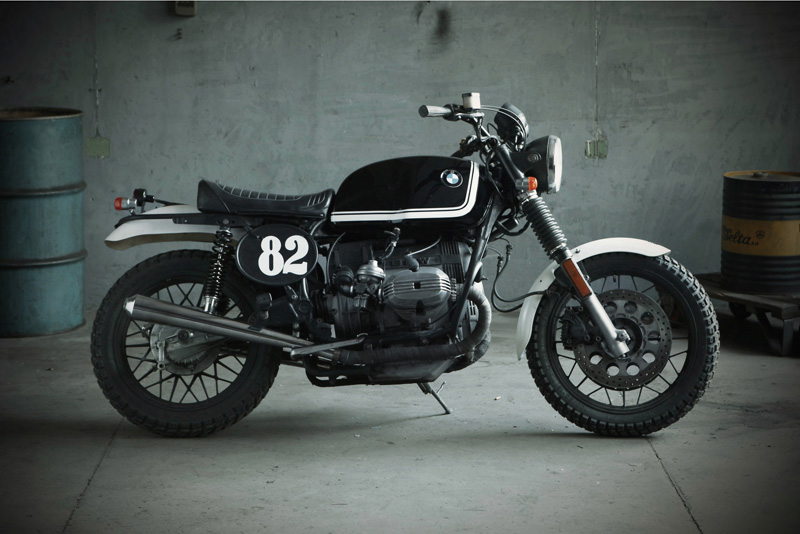
You’ve probably never heard of Karles Vives. He is not famous in the motorcycling world and up until 6 months ago he had never attempted to build a bike. That all changed when he picked up a 1982 BMW R100 and Jeremy Churchill’s ‘BMW 2-Valve Twins’ book and decided to turn a tired old beemer that was drowning in panniers and a chunky fairing into the classic styled scrambler of his dreams. When we spotted this bike, it got our attention like a red rag to a bull and wanted to find out more about this Spaniard and his classy German scrambler he affectionately calls ‘Scram’.
Can you tell us a little about yourself and your background?
Hi, my name is Karles Vives and I live and work in Barcelona, Spain. I’ve been working as graphic designer and creative director for more than 15 years, but my passion for motorbikes started 20 years ago when I purchased my first motorbike. It was an all red Vespa Primavera 125 that I used to call “the red Baron” :-). Many more followed that first one, from custom to trails, sportbikes, or nakeds, until I got the current BMW GS 1150 Adventure one. I love everything related to “vintage culture”, from photography to music, design or fashion.
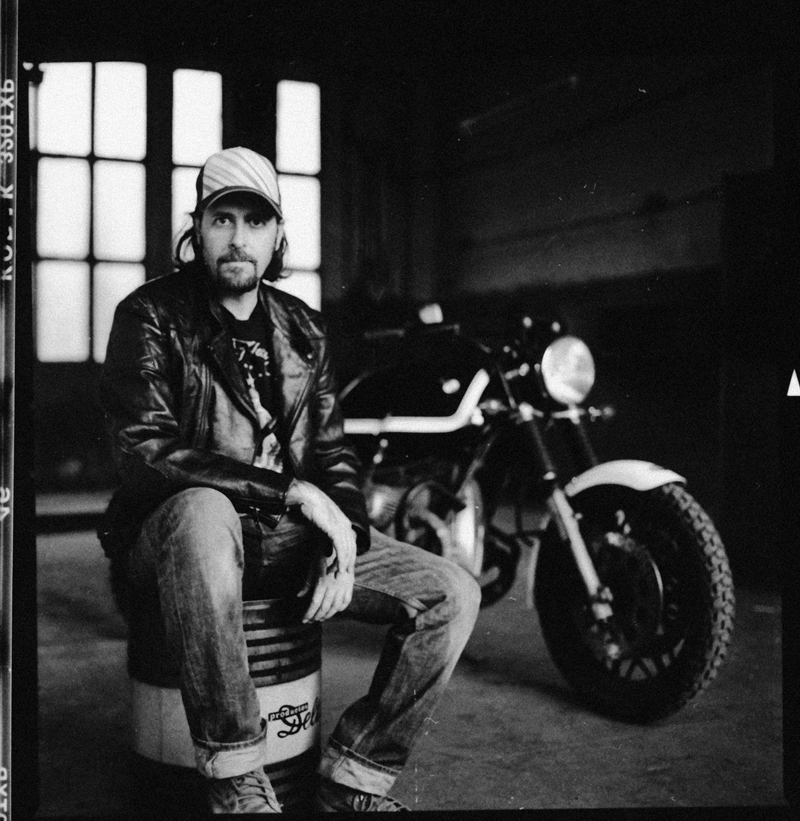
Is it true you had no mechanical knowledge before building this bike?
Yes, absolutely true! I had never changed a brake pad before, or dismantled a wheel unless it was from my bicycle..hahaha. So, yes, that’s the message: if I was able to do it, you can do it too!
So it’s a 1982 BMW R100 RT? Tell us what you’ve done to it.
Yes, it’s a 1982 BMW R100, a motorbike used by the German police and designed to do long trips. The first thing I did was to dismantle the whole fairing and the motorcycle hard luggage. Once it was dismantled, I had to change the ignition switch position into the headlight. I changed the rear shocks and the front fork springs. I painted the wheels in matt black and substituted the road tyres by offroad tyres. I had to stick to the original sizes to avoid problems with the Vehicle Technical Examination. I also changed the indicators and the rear light, and substituted the rear fender by another fender from an old enduro bike. The brake disc and the front brake bracket support were made by a specialist in steel. I changed the seat to the original BMW solo seat. The handlebar was also substituted by another one from a Yamaha XT500. The brake pads and the air and fuel filters were also replaced by new ones. Finally, I used the photoshop to test the final design and painting of the fuel tank and fenders, which were painted by a specialist from Barcelona (he also paints Jorge Lorenzo’s helmets.
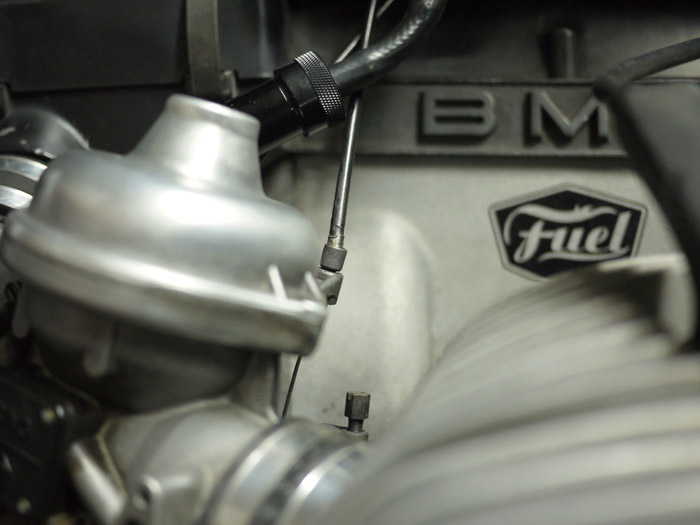
Did anyone help you with the build? Or did you do it all yourself?
I did it all by myself, except for the painting. For the electrical side, I counted on the help of a friend with better knowledge on that. But my best “tool” was definitely Jeremy Churchill’s book “BMW 2-Valve Twins ’70 to ’96”
Did you encounter any problems when building it? How long did it take?
Yes, I did find some difficulties. Sometimes it was due to the lack of proper tools, to my lack of experience or because it was hard to find the pieces I wanted. You spend a lot of time searching for the pieces you need, either by internet or in old bikes markets but, even when you find them, you don’t know for sure whether they will fit, mechanically nor aesthetically, and they don’t always fit… but that’s part of the magic of the creative process! I started working on this project in mid-July and finished it at the beginning of September.
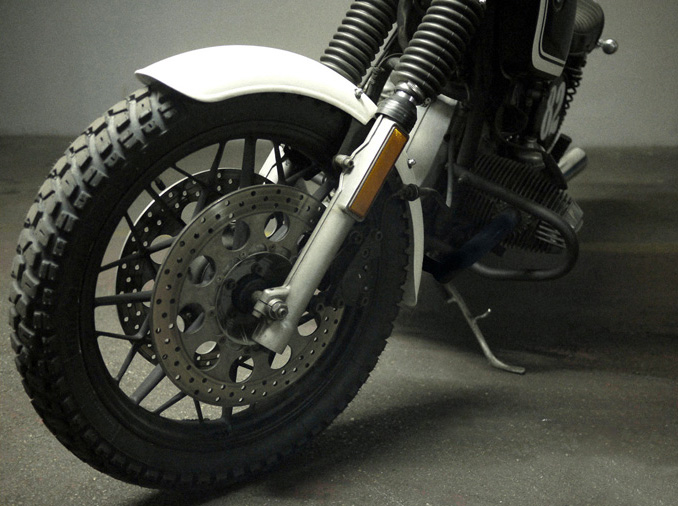
What inspired you to build this BMW scrambler?
I think that the modern BMW GS or Yamaha XT trails are the current version of the former Scrambler, road bikes that could be used both on the road and on the paths with just a few changes. I enjoy driving a bike feeling that I can go wherever I want, no matter if the road ends or not. That’s the maximum feeling of freedom and adventure I can have on a motorbike. And that’s what brought me to combine scrambler’s aesthetics with BMW hardness and reliability.
How do people react to ‘Scram’?
People love it! No matter if they like bikes or not, people look at it and smile. My favorite reaction was that of someone who told me: “It doesn’t look like a customized bike, it rather seems to be a new BMW model”
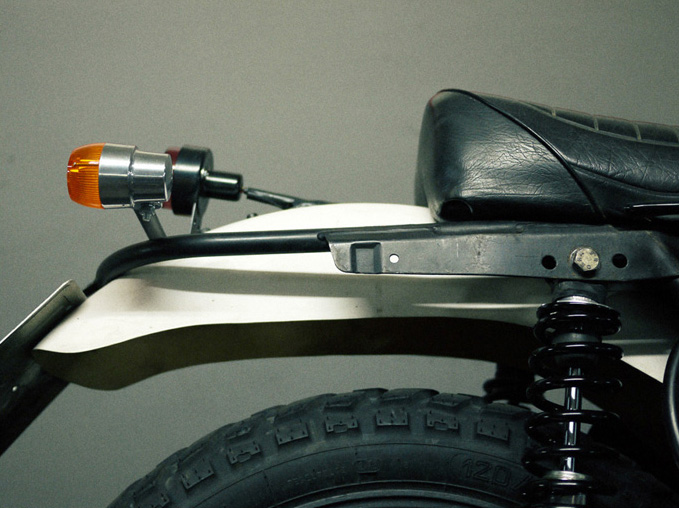
So you also just started Fuel Bespoke Motorcycles? Is that your full time job now?
It was an incredible experience building this scram. I felt happy, I had no timetable and I woke up everyday willing to keep on working on the bike. It was kind of an addiction, and when I finished it, I wanted more. So, I decided to try and start this adventure under the name of Fuel Bespoke Motorcycle. A professional mechanic has now joined the project and I continue working as an advertisement creative. But who knows? Maybe it will turn into my full time job! That’s why I’m going to fight and work hard.
What’s your favourite thing about the scrambler?
When I see a bike, I need to like it. I don’t care about its power or technological aspects. If I don’t like its aesthetics, I don’t get it. So, my favorite thing of this motorbike is its look, a mixture of elegance, old fashionable and “loutish”. It is also a surprisingly fast, funny and comfortable bike to ride… what else can I ask for?
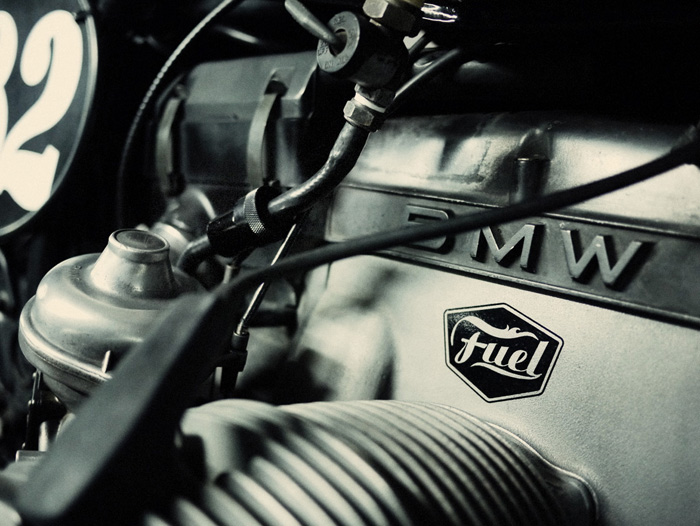
Whats next for Fuel Bespoke Motorcycles?
I would like this Scram to turn into the seed of something that grows step by step, with the same care, passion and devotion that a father has for his child. That’s the way I understand branding… but that’s another story. I have plenty of ideas for FUEL to grow and bring big things to the motorbike world. I’m currently finishing the next Fuel, also based on a R100 BMW and inspired on the Flat Track bikes. I hope to have it finished soon and sell it. I’m also very interested in the vintage fashion world. I’m now working on a small collection of t-shirts, and also on a prototype of vintage style leather jacket… Old’s cool!
And next step? Finding investment to keep on growing… So, if there’s any investor reading this interview who would like to jump into this adventure, he can call me and we’ll chat!
You can contact Karles or check out his latest work on the Fuel Bespoke Motorcycle blog.
Spec list:
Engine: 979cc Power: 70 HP
Top speed: 180 km/h
Gearbox: 5-speed
Fuel capacity: 24 litres
Weight: 260 kg
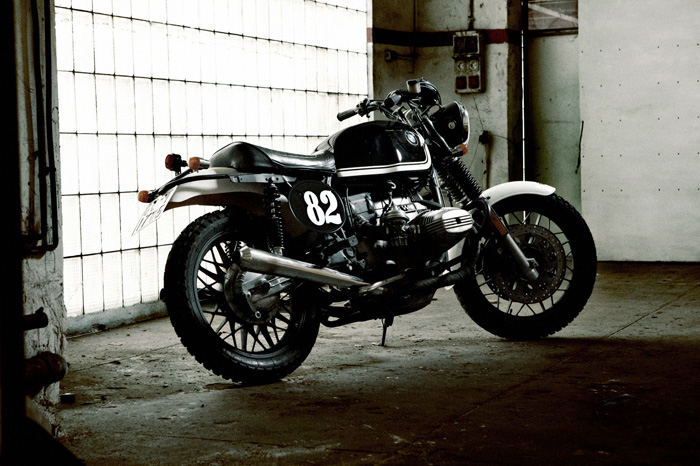
Photography by Pere Ferrer
